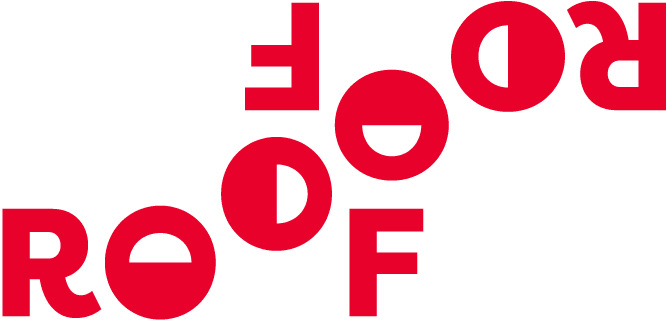
May 1, 2024 | Marketing, Roofing, Sales
Landing commercial roofing contracts can be a tough task, but with the right strategies, you can enhance your chances of success. Below, we’ve laid out some valuable tips to help you secure more contracts and grow your roofing business.
Know Your Stuff
First and foremost, you need to have deep knowledge about commercial roofing. Understand the different materials, techniques, and the latest trends. Being a pro in your field will make clients trust you more. They’ll see that you know what you’re talking about, which is a big deal when choosing a contractor.
Build a Strong Reputation
Having a good reputation is key. If people have heard good things about your work, they’re more likely to hire you. You can build a strong reputation by always doing a great job and encouraging happy clients to leave positive reviews online or refer you to others. Word of mouth is powerful!
Make Connections
Don’t wait for customers to come to you. Get out there and network! Attend industry events, join local business groups, and get active on social media platforms where businesses might look for roofing contractors. The more people know about your service, the higher your chances of landing contracts.
Offer Competitive Pricing
Be smart about your pricing. You don’t want to be too pricey, but you also need to make a profit. Offering competitive pricing can make you more attractive to potential clients. Consider providing free estimates or consultations as a way to get your foot in the door.
Provide Excellent Customer Service
Good customer service goes a long way. Respond quickly to inquiries, be friendly and helpful, and always follow up with your clients. If you make the experience pleasant and easy for them, they’re more likely to choose you for their roofing needs.
Highlight Your Unique Selling Points
What makes your business stand out? Maybe you specialize in sustainable roofing solutions, or perhaps you offer an unbeatable warranty. Whatever your unique selling points are, make sure they’re front and center in your marketing materials and sales pitches.
Use High-Quality Materials
Never compromise on the quality of materials. High-quality materials not only last longer but also provide better protection and a more professional finish. Clients will notice the difference, and it could be the deciding factor in choosing your service.
Keep Learning
The commercial roofing industry is always evolving, so it’s important to keep learning and stay up to date. This might mean attending workshops or taking online courses. The more you know, the better service you can offer, and the more appealing you’ll be to potential clients.
Securing commercial roofing contracts requires effort, skill, and a bit of strategy. By following the tips above, you’ll be well on your way to winning more contracts and expanding your business. Remember, consistency is key, so don’t get discouraged if you don’t see results overnight. Keep at it, and your hard work will pay off.
Apr 18, 2024 | Marketing, Sales, Web Design
In the contemporary marketplace, Facebook has evolved into a powerful tool for businesses across all industries to increase their visibility and attract new customers. For roofing companies, Facebook ads offer a targeted approach to advertising that can significantly impact your business’s growth and clientele expansion. This article explores why you should consider Facebook ads for your roofing business and provides practical tips on how to create effective campaigns.
Why Facebook Ads?
Facebook boasts over 2 billion active users, providing a vast audience for your roofing business. The platform offers advanced targeting options that allow you to reach potential customers based on specific demographics, interests, and behaviors. This means your ads can be shown to homeowners in your local area who may be in need of roofing services. Additionally, Facebook’s cost-effective pricing means you can achieve substantial visibility without exhausting your marketing budget.
Setting Goals for Your Campaign
Before launching a Facebook ad campaign, it’s crucial to set clear, measurable goals. Whether you want to increase brand awareness, generate leads, or drive traffic to your website, having specific objectives will help you design more effective ads and measure the success of your campaign. For roofing businesses, common goals include getting quote requests, booking consultations, or promoting seasonal roof inspections and maintenance services.
Understanding Facebook Ad Types
Facebook offers various types of ads you can utilize to promote your roofing business:
- Image Ads: These simple ads are a great way to start with Facebook advertising. A striking image combined with a compelling caption can effectively attract the attention of potential customers.
- Video Ads: Video ads can show your team in action, providing a behind-the-scenes look at a roofing job or demonstrating the quality and safety of your work. This type of content is highly engaging and can increase the trustworthiness of your brand.
- Carousel Ads: Featuring multiple images or videos, carousel ads allow you to showcase different services you offer, such as roof repair, installation, or maintenance.
- Lead Ads: These ads are designed specifically for lead generation. They include a built-in form that makes it easy for Facebook users to sign up for more information, effectively generating potential leads directly from the ad.
Targeting the Right Audience
Facebook’s targeting capabilities are a key component in the success of your ad campaign. You can target users by location, age, gender, interests, and behaviors, among other options. For a roofing company, you might want to target homeowners within a specific age range or properties in areas that recently experienced severe weather conditions. Additionally, retargeting options allow you to reach people who have previously interacted with your brand, reminding them of your services and potentially prompting them to get in touch.
Crafting Compelling Ad Content
The effectiveness of your Facebook ads largely depends on the quality of the content. Ensuring your ads resonate with the target audience is paramount. High-quality images of your work, testimonials from satisfied customers, and clear, direct calls to action (CTA) like Contact us for a free estimate or Learn more can improve the performance of your ads. Also, maintain authenticity and professionalism in every ad, as these elements reflective of your business’s values and professionalism.
Monitoring and Adjusting Your Campaigns
Once your ads are live, it’s important to continuously monitor their performance and make necessary adjustments. Use Facebook’s Ads Manager to track metrics such as impressions, click-through rates, and conversions. Analyzing this data allows you to see what’s working and what isn’t, helping you to optimize your campaigns for better results.
Conclusion
Facebook ads can be an incredibly effective tool for roofing businesses looking to grow their customer base and increase their sales. By setting clear goals, understanding the ad types available, targeting the right audience, creating compelling content, and continually monitoring performance, you can harness the full potential of Facebook advertising to boost your business’s success.
With the right strategy, roofing companies can see significant returns from their Facebook advertising efforts, making it a valuable component of your digital marketing efforts. Whether you’re just starting out or looking to enhance your existing campaigns, these strategies can provide a framework for effective advertising on Facebook.

Jan 23, 2024 | Marketing, Sales
Introduction to Achieving $100K in Roofing Sales
Achieving $100,000 in roofing sales is a significant milestone for sales professionals in the roofing industry. This target not only reflects a substantial volume of business but also showcases the salesperson’s expertise, reliability, and dedication to their craft. Whether you are new to roofing sales or looking to increase your sales figures, the following tips will guide you through strategies that are proven to enhance your sales performance and help you reach this impressive goal.
Understanding the Roofing Market
Before diving into specific sales tips, it’s crucial to have a firm understanding of the roofing market. This includes knowledge about different roofing materials, understanding the local climate’s impact on roofing, and staying updated with the latest industry trends and technology advancements. Familiarizing yourself with these aspects will help you to provide valuable information to customers and suggest the most suitable solutions for their needs.
Tip 1: Educate Yourself Continuously
Invest time in learning about new products, installation techniques, and sustainability practices in roofing. Attend workshops, seminars, and webinars that can enhance your product knowledge and technical skills. Being well-informed not only boosts your credibility but also empowers you to confidently answer client queries and handle objections effectively.
Tip 2: Understand Local Building Codes
Different regions have specific building codes relating to roofing. Understanding these regulations can help you avoid proposing non-compliant solutions, thus saving time and avoiding legal issues.
Building Strong Customer Relationships
In the roofing sales industry, success heavily relies on trust and relationships. A durable roof is a significant investment for most homeowners, and they need to trust that you are offering the best solution.
Tip 3: Foster Trust Through Transparency
Always be transparent about pricing, the materials used, the duration of work, and any warranties offered. Dishonesty can lead to mistrust and damage your reputation and potential referrals.
Tip 4: Follow-Up Consistently
Regular follow-ups keep you top-of-mind and demonstrate your commitment to customer service. Make a schedule for checking in on past clients, updating them on new solutions, or simply ensuring they are satisfied with their installation.
Leveraging Technology
Incorporating technology can significantly streamline operations and improve your sales numbers.
Tip 5: Use CRM Software
Customer Relationship Management (CRM) software helps manage interactions with current and potential customers. It stores useful data that can help you understand client needs and preferences, leading to more personalized and effective sales strategies.
Tip 6: Embrace Digital Marketing
Utilize digital platforms like social media, your company website, and online ad spaces to reach a broader audience. An interactive, informative website with high-quality content about roofing solutions can attract more leads. Search engine optimization (SEO) is particularly effective in increasing visibility in local search results.
Mastering the Art of the Sale
Your approach to selling plays a crucial role in reaching the $100K mark.
Tip 7: Improve Your Consultative Selling Skills
Focus on understanding customer needs and providing tailored solutions rather than pushing sales. Ask the right questions, listen actively, and build a proposal that addresses the client’s specific problems and objectives.
Tip 8: Upselling and Cross-Selling
When appropriate, suggest upgrades or additional products that could enhance the client’s roofing solution. For instance, offering solar tiles might be an attractive proposition for environmentally conscious customers.
Tip 9: Offer Flexible Financing Options
Roofing can be expensive, and not all homeowners can afford to pay upfront. Providing flexible financing options can make roofing projects more accessible to a wider audience, thus increasing your sales potential.
Conclusion
Reaching $100,000 in roofing sales is an achievable goal with the right approach and strategies. By continuously educating yourself, building strong, trust-based customer relationships, leveraging the latest technologies, and perfecting your sales techniques, you can significantly increase your chances of achieving and even surpassing this target. Remember, every roofing project is an opportunity to build a lasting relationship that can lead to future business and referrals.

Apr 27, 2023 | Industry News, Sales
Understanding Customer Acquisition Cost
Customer Acquisition Cost (CAC) is a crucial metric for any business, particularly in the marketing and financial domains. It measures the total cost of acquiring a new customer, considering marketing and sales efforts. Accurately calculating CAC helps companies evaluate the efficiency of their investment strategies and can signal whether adjustments are necessary for future marketing campaigns or sales tactics.
Steps to Calculate Customer Acquisition Cost
Step 1: Determine the Time Period
The first step in calculating CAC is to define the time period over which the costs and new customers will be measured. This could be a quarter, a year, or any period relevant to your business goals and reporting practices.
Step 2: Aggregate Relevant Costs
Gather all expenses directly related to acquiring new customers during the chosen time period. This includes:
- Marketing Expenses: Costs associated with advertising, marketing staff, content production, paid media, and promotional events.
- Sales Expenses: Salaries of sales personnel, commissions, and costs of sales support materials and activities.
- Software/Subscriptions: Any tools or software used primarily for marketing and sales automation.
- Overheads: Allocate a portion of overhead that directly supports marketing and sales activities. This can include utilities or rent for spaces dedicated to these departments.
Step 3: Count New Customers Acquired
Count the total number of new customers acquired during the same period that the costs were recorded. Ensure accuracy in tracking to include only those customers who truly are new to the business.
Step 4: Perform the Calculation
Use the formula:
CAC = Total Acquisition Costs / Total New Customers Acquired
Divide the total acquisition costs by the total number of new customers acquired to find the CAC. For example, if your total costs are $100,000 and you acquired 500 new customers, your CAC is $200 per new customer.
Examples of CAC Calculation
Example 1: A small business spends $10,000 on marketing and sales. They acquire 50 new customers. Their CAC is thus $10,000 / 50 = $200 per customer.
Example 2: A larger company spends $500,000 on comprehensive marketing campaigns and its sales team. They acquire 1,000 new customers. Thus, their CAC calculates as $500 per customer ($500,000 / 1,000).
Understanding CAC in Different Contexts
CAC can significantly vary depending on the industry, the scalability of operations, and the target market segments. It’s imperative for businesses to benchmark their CAC against industry standards to gauge performance. Lower CAC often reflects efficient marketing and sales operations, whereas a higher CAC suggests that strategies might need refinement for better return on investment.
Optimizing Customer Acquisition Cost
After calculating the CAC, businesses should explore strategies to optimize their marketing and sales processes. This may include investing in more effective marketing channels, refining the sales process, or implementing more sophisticated customer tracking and engagement tools. By continuously monitoring and striving to improve CAC, companies can increase their profitability and ensure sustainable growth.
In conclusion, calculating Customer Acquisition Cost is an essential practice for businesses to manage and optimize their investment in acquiring new customers. It not only helps in assessing the effectiveness of marketing and sales efforts but also assists in financial planning and strategy development.



